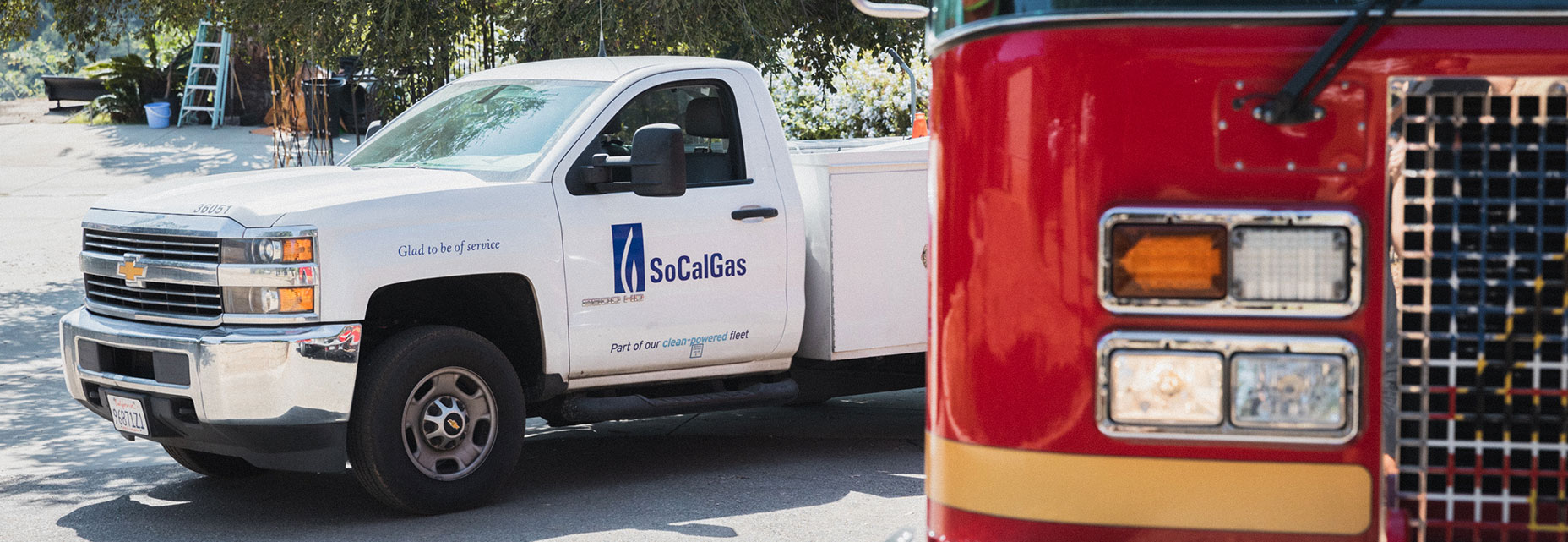
The Importance of Aliso Canyon
Aliso Canyon serves more than 11 million customers and provides fuel to 17 natural gas-fired power plants. It is a critical part of the region’s energy infrastructure – more than 90 percent of Southern Californians depend on gas for heat and hot water, and approximately 60 percent of all the electricity generated in California is made by natural gas-fired power plants. Natural gas storage is especially important for electric generation because it supports renewable power sources, like wind and solar, and allows us to avoid burning dirty fuels, like diesel or coal, to keep the lights on. When the wind doesn’t blow or the sun doesn’t shine for renewable electric generators, the natural gas from Aliso Canyon helps to fill those energy gaps.
Aliso Canyon is centrally located in the Santa Susana Mountains, allowing for a quick and effective response to local, real-time energy demands. The location of the field is important because, unlike electricity, natural gas typically travels at relatively slow speeds in the range of 20-30 miles per hour. For example, it could take approximately ten hours for natural gas supplies to travel through SoCalGas’ transmission system from Blythe to several power plants located in the Los Angeles basin. By contrast, natural gas withdrawn from Aliso Canyon can meet demand significantly quicker, within one to two hours. Natural gas storage allows both large and small customers to enjoy a consistent supply of natural gas to heat their homes, to cook their food, and to power their businesses, twenty-four hours a day, seven days a week.
Our Commitment to Safety
In support of continued safety, Aliso Canyon is being held to the most rigorous monitoring, inspection and safety requirements in the nation. Ongoing steps to maintain accountability include:
- Real-time pressure monitoring of all wells;
- Visual inspections of each well four times a day;
- Operation of the fence line methane monitoring system;
- Community engagement through the Community Advisory Council; and
- Continuous ambient methane monitoring systems
Resources
SoCalGas Gas Safety Plan
General Order (GO) 95
General Order (GO) 165
Aliso Canyon Safety Plan
2025 Brush Clearing Schedule and Completion Dates
Aliso Canyon Gas Operation Power Shutoff Initiation
2024 Aliso Canyon Storage Field Inspection Report
2025 Aliso Canyon Storage Safety Audit
Current vegetation and weather conditions applicable to Aliso Canyon overhead electric facility shutdown procedures:
- National Weather Service - Current Conditions (Red Flag Warnings)
- Los Angeles County Live Fuel Moisture (Santa Clarita Valley Chamise)
- National Weather Service - Non-Living Fuel Moisture, Humidity and Wind Speed
Well Inspection Update
We continue to work with CalGEM and CPUC to complete a comprehensive safety review of all wells at Aliso Canyon. SoCalGas provides CalGEM with an updated well inspection report on the first Friday of each month.
As of March 19, 2025
- 114 (or 100%) of the original wells at Aliso Canyon completed the first phase of required tests
- Number of active wells with Baseline Assessment completed – 59 (or 100%)
- Number of active wells with Second Round of Assessment completed – 59 (or 100%)
- Number of active wells with Third Round of Assessment completed – 41 (or 69.5%)
- Number of active wells with Fourth Round of Assessment completed – 6 (or 10.2%)
- Number of original wells Plugged and Abandoned – 55 (or 48.3%)
- Number of active wells in the process of Abandonment – 0 (or 0%)
- Number of active wells completed with inner string installations – 42 of 59 wells (or 71%)
Well inspection test results are posted on CalGEM's website and can be found here.
More on Infrastructure, Technology, and Safety Enhancements
SoCalGas has worked diligently to complete what experts have called “the most comprehensive safety review in the country,” creating multiple layers of safety at Aliso Canyon. Work we have completed includes:
- Replacing the inner steel tubing of every approved well;
- Using the casing around the new inner steel tubing — tested to ensure integrity under pressure — to provide a physical, secondary barrier of protection against potential leaks;
- Operating the facility at reduced pressure, as directed by CPUC;
- Withdrawing and injecting natural gas only through the inner steel tubing of those wells that have passed all tests and have been approved for use by CalGEM.
Additional Information
Infrared Fence-Line Methane-Monitoring System
- Current Methane Monitoring Readings
- The Importance of Aliso Canyon Video
- Well Inspection Process Video
- Mechanical Well Seal and Isolation Process Video
- Aliso Canyon Infrastructure, Technology, and Safety Enhancements Video
- Natural Gas Transmission Video
Seismic Studies
Overall, the studies found the seismic risks at Aliso Canyon are relatively low and indicate these risks can be reasonably managed and/or mitigated over the life of the facility.
Overview
Summary
Community Notifications - Aliso Canyon
Contact Information
For any questions, comments or suggestions, please contact:
Marisol Espinoza
Public Affairs Manager
Mespinoza2@socalgas.com
Or, use this contact form.

